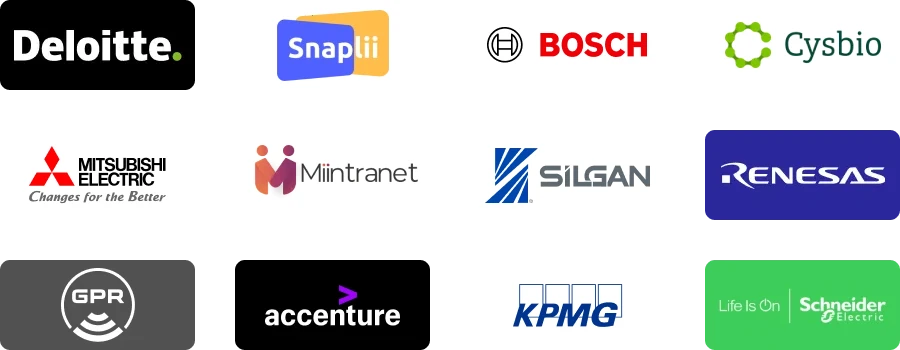| REPORT ATTRIBUTE |
DETAILS |
| Historical Period |
2020-2023 |
| Base Year |
2024 |
| Forecast Period |
2025-2032 |
| AI Training Datasets Market Size 2023 |
USD 2,153.12 million |
| AI Training Datasets Market , CAGR |
25.1% |
| AI Training Datasets Market Size 2032 |
USD 16,157.87 million |
Market Overview
The global AI Training Datasets Market is projected to grow from USD 2,153.12 million in 2023 to an estimated USD 16,157.87 million by 2032, with a compound annual growth rate (CAGR) of 25.1% from 2024 to 2032. This rapid expansion is driven by the increasing demand for high-quality datasets required to train AI and machine learning models across various industries, including healthcare, automotive, and finance.
Key market drivers include the rising adoption of AI and machine learning technologies, the growing need for diverse and high-quality data for accurate model training, and increasing investment in AI research and development. Trends such as the growing reliance on synthetic datasets, the integration of edge computing, and the use of AI in data generation and augmentation are significantly impacting the market. Moreover, regulatory advancements are driving the need for standardized and compliant datasets to enhance the quality and accessibility of AI models.
Geographically, North America holds the largest market share due to the region’s technological advancements, strong presence of key players, and substantial investments in AI development. Europe and the Asia Pacific region are also expected to witness significant growth, driven by increasing adoption of AI technologies and regional market dynamics. Key players in the global AI Training Datasets Market include Appen Limited, Scale AI, Amazon Web Services, and Microsoft Corporation, among others.
Access crucial information at unmatched prices!
Request your sample report today & start making informed decisions powered by Credence Research Inc.!
Download Sample
Market Insights
- The global AI Training Datasets Market is projected to grow from USD 2,153.12 million in 2023 to USD 16,157.87 million by 2032, with a CAGR of 25.1% from 2024 to 2032.
- Increased adoption of AI and machine learning technologies, coupled with rising demand for high-quality and diverse datasets, is fueling market growth.
- Rising investments in AI research and development across industries like healthcare, automotive, and finance contribute to the increasing demand for training datasets.
- Data privacy concerns, compliance with stringent regulations like GDPR, and high costs associated with data labeling and annotation pose significant challenges.
- North America holds the largest market share, followed by strong growth in Europe and the Asia-Pacific region due to expanding AI applications and investments.
- The rise of synthetic data and data augmentation techniques is enabling faster and more cost-effective dataset creation, addressing data scarcity issues.
- As AI models face growing scrutiny, the need for bias-free, diverse, and ethically sourced datasets is driving innovation in the market.
Market Drivers
Rising Adoption of AI and Machine Learning Technologies
The growing adoption of artificial intelligence (AI) and machine learning (ML) across industries is a primary driver of the global AI Training Datasets Market. Organizations are increasingly integrating AI into their operations to automate processes, gain predictive insights, and enhance customer experiences. However, the success of AI models heavily relies on the availability of high-quality and diverse datasets for training purposes. For instance, Google has invested $60 billion in AI development, particularly in training AI models using vast datasets. As AI and ML technologies become more integral to sectors such as healthcare, automotive, retail, finance, and manufacturing, the demand for AI training datasets continues to rise. Industries like healthcare require specific datasets to train models for tasks such as disease diagnosis, drug discovery, and personalized medicine. Similarly, autonomous vehicles depend on vast datasets for training algorithms to enable safe driving. The increasing reliance on AI underscores the need for reliable and diverse datasets, making them a critical component of the AI development pipeline.
Growing Demand for High-Quality and Diverse Datasets
The accuracy and performance of AI and ML models are directly tied to the quality and diversity of the datasets used for training. Data that is comprehensive, balanced, and representative of real-world scenarios allows AI models to make more accurate predictions and improve over time. For instance, the U.S. National Science Foundation announced a $140 million investment to establish seven new National Artificial Intelligence Research Institutes focused on advancing foundational AI research and developing novel approaches to cybersecurity, climate change solutions, and enhancing education and public health. As AI applications expand across multiple industries, the need for high-quality training datasets has intensified. Datasets must encompass various aspects such as demographic diversity, different environmental conditions, or varying use cases to ensure that the models do not exhibit bias and are capable of generalizing effectively. This includes datasets for image recognition, natural language processing, and time-series forecasting. The increasing recognition of the importance of data quality has led to a growing focus on curating and refining datasets for AI and ML models.
Significant Investment in AI Research and Development
Investment in AI research and development (R&D) is accelerating at an unprecedented pace. Both private and public sectors are investing heavily to advance AI technologies, fueling the demand for AI training datasets. For instance, the U.S. Federal Trade Commission has cautioned against practices such as “quietly changing” privacy policies to accommodate personal data collection and use by AI, highlighting the importance of transparent data practices. This investment is not only directed toward improving the capabilities of AI algorithms but also in creating large-scale, diverse, and high-quality datasets needed to enhance AI models’ performance. Governments and enterprises are establishing AI-focused research institutions, innovation hubs, and labs that rely on large, reliable datasets for their initiatives. The emergence of AI research centers in various regions has further boosted the need for comprehensive datasets to support diverse applications. As innovation progresses in fields such as natural language processing, computer vision, and reinforcement learning, there is an ongoing demand for training data to refine and improve AI systems.
Regulatory Compliance and Data Privacy Concerns
As AI technologies continue to advance across industries, regulatory concerns around data privacy have increased significantly. Many countries are introducing stringent data protection laws to safeguard consumer privacy in sectors like healthcare and finance. For instance, the CNIL in France emphasizes conducting data protection impact assessments at each stage of the AI life cycle due to potential effects on individuals’ mental health or risks of harassment. Compliance with regulations such as the General Data Protection Regulation (GDPR) in Europe has created a demand for datasets that adhere to these legal frameworks. Ensuring data privacy in AI training datasets is critical where sensitive information is involved. Additionally, regulations on using AI models in decision-making mandate that datasets used must be fair, unbiased, and transparent. This growing emphasis on regulatory compliance has led to a surge in demand for ethically sourced, anonymized training datasets. Organizations offering these datasets are increasingly required to meet compliance standards, driving innovation in data collection methodologies while ensuring ethical practices are upheld in the development of AI technologies.
Market Trends
Increasing Use of Synthetic Data and Data Augmentation
One of the prominent trends in the global AI training datasets market is the growing use of synthetic data and data augmentation techniques. Traditional methods of data collection for training AI models often face challenges such as high costs, limited availability of labeled data, and concerns over privacy. To address these challenges, organizations are increasingly turning to synthetic data, which is artificially generated to mimic real-world data patterns. This approach is particularly beneficial in situations where acquiring real-world data is difficult or expensive, such as in autonomous driving or medical research. For instance, companies like Waymo and Cruise are utilizing synthetic data generation techniques to create vast amounts of simulated LiDAR data for training autonomous vehicle AI models. This allows them to generate millions of diverse driving scenarios, significantly enhancing the robustness of their self-driving systems. Additionally, synthetic data is valuable for creating large datasets for specific use cases where real-world data may be insufficient or underrepresented. Similarly, data augmentation techniques, such as flipping, cropping, or altering images, are gaining traction to diversify training datasets without requiring additional real-world data collection. These methods help improve model accuracy and address data scarcity issues, enabling organizations to enhance AI model performance while reducing reliance on traditional dataset creation processes.
Shift Towards High-Quality, Domain-Specific Datasets
Another significant trend in the AI training datasets market is the increasing demand for high-quality, domain-specific datasets. While general-purpose datasets were once sufficient for training many AI models, the growing complexity and specificity of AI applications across industries now require tailored datasets. For instance, in healthcare, AI models need datasets specific to particular medical conditions, demographic groups, or diagnostic processes. Companies are leveraging domain-specific datasets to train AI systems that can better identify nuanced patterns in areas like rare disease detection or personalized treatment plans. Similarly, in autonomous vehicles, datasets must encompass various traffic conditions, weather scenarios, and geographic environments to ensure safety and precision. Waymo’s use of specialized datasets for urban driving conditions is a prime example of this trend. The shift towards domain-specific datasets ensures that AI models are better equipped to make accurate predictions tailored to their respective industries. Furthermore, the emphasis on quality has led to increased efforts in data curation, validation, and labeling to ensure that these datasets are comprehensive and free from biases or inaccuracies. The rise of domain-specific data providers has enabled businesses to source highly specialized datasets that cater to their exact needs, ensuring the success of their AI models across diverse applications.
Growing Focus on Ethical AI and Bias-Free Datasets
As AI technologies become more deeply embedded in decision-making processes, there is an increasing focus on ensuring that the datasets used to train these models are ethical and free from biases. AI systems that rely on biased training data can perpetuate inequalities, making decisions that disproportionately affect certain groups. This issue has become particularly important in areas such as hiring practices, loan approvals, criminal justice, and healthcare, where biased AI models can lead to discrimination. To address these concerns, there is a growing emphasis on developing datasets that are both diverse and representative of all populations. The ethical use of AI and its datasets has led to the implementation of frameworks and guidelines aimed at identifying and mitigating biases within datasets. Additionally, regulatory bodies are increasingly mandating that AI models be transparent and accountable, ensuring that they do not reinforce harmful stereotypes or societal inequalities. As organizations continue to prioritize ethical AI, the demand for bias-free, diverse, and inclusive datasets has surged. This trend is not only shaping the development of more equitable AI models but also influencing the way datasets are collected, validated, and labeled across various industries.
Integration of AI and Edge Computing for Real-Time Data Processing
The integration of AI and edge computing is another significant trend shaping the AI training datasets market. Edge computing involves processing data closer to the source (i.e., on local devices or sensors) rather than relying on centralized cloud servers. This approach is becoming increasingly important in applications that require real-time data processing, such as autonomous vehicles, industrial automation, and IoT devices. As AI applications move to the edge, the need for high-quality, real-time training datasets is growing. Edge devices generate vast amounts of data that must be processed, labeled, and used to continuously train AI models to ensure they adapt to new situations and conditions. This shift requires datasets that can be easily updated and processed in real-time, allowing AI systems to learn and make decisions instantly. As a result, data providers are focusing on creating datasets that are optimized for edge AI applications, offering smaller, more specific datasets that can be deployed and processed efficiently on edge devices. Additionally, the rise of edge AI is driving the development of more distributed dataset collection methods, where data is gathered directly from the devices in use, helping improve the accuracy of AI models while also reducing the costs associated with large-scale data collection.
Market Challenges
Data Privacy and Security Concerns
A significant challenge facing the global AI training datasets market is the growing concern over data privacy and security. As AI models require vast amounts of data for training, issues related to the protection of sensitive and personal information have become more prominent. Regulations such as the General Data Protection Regulation (GDPR) in Europe and the California Consumer Privacy Act (CCPA) in the U.S. impose strict guidelines on data collection, storage, and usage. Companies involved in creating AI training datasets must navigate these complex regulatory environments to ensure that the data used for model training complies with privacy laws and industry standards. The collection and utilization of sensitive data, such as healthcare information or financial records, heighten the risk of privacy breaches, which can lead to legal ramifications and damage to brand reputation. Furthermore, AI models trained on biased or incomplete datasets can inadvertently perpetuate discriminatory outcomes, raising ethical concerns and regulatory scrutiny. To address these challenges, companies must implement robust data protection measures, ensure transparency in data usage, and prioritize ethical data sourcing, all of which require significant resources and technical expertise.
High Costs and Resource-Intensive Data Labeling
Another critical challenge in the AI training datasets market is the high cost and resource-intensive nature of data labeling. Labeling data, which involves categorizing or annotating raw data to make it usable for training AI models, is a labor-intensive process that requires both time and expertise. High-quality labeled datasets are essential for creating accurate AI models, but the costs associated with data labeling can be significant, especially for large datasets. For example, labeling millions of images or text documents can require substantial human resources, which increases the overall cost of dataset creation. Additionally, outsourcing this task to third-party vendors can lead to further complications, such as inconsistencies in labeling quality or data security risks. These challenges are particularly prominent in industries where data is highly specialized, such as healthcare or autonomous vehicles, where domain-specific knowledge is required to label the data accurately. As the demand for high-quality datasets continues to grow, finding efficient, cost-effective, and scalable solutions for data labeling remains a key challenge for businesses operating in the AI training datasets market.
Market Opportunities
Expanding Applications Across Industries
One of the most significant opportunities in the global AI training datasets market lies in the expanding applications of AI across a wide range of industries. Sectors such as healthcare, automotive, finance, and retail are increasingly leveraging AI to optimize operations, improve customer experiences, and drive innovation. As AI technologies become more integrated into these industries, the demand for high-quality, specialized training datasets is poised to grow. In healthcare, for example, AI is being used for disease diagnosis, personalized medicine, and drug discovery, which requires access to vast, high-quality datasets. Similarly, the rise of autonomous vehicles and advanced driver-assistance systems is driving the need for datasets that can train AI algorithms to operate safely in diverse traffic environments. These growing applications present a substantial market opportunity for dataset providers to offer tailored, high-quality data solutions that address the specific needs of various sectors.
Advancements in Data Generation and Labeling Technologies
Another significant opportunity for growth in the AI training datasets market lies in the advancements in data generation and labeling technologies. Innovations in synthetic data generation and data augmentation techniques are allowing companies to create large-scale datasets without the need for expensive and time-consuming manual data collection processes. Furthermore, advancements in AI-driven data labeling tools are improving the efficiency and accuracy of dataset creation, helping businesses overcome one of the most resource-intensive challenges in AI development. As these technologies continue to evolve, they have the potential to reduce the cost and time associated with dataset creation, making it more accessible for organizations of all sizes and enabling the rapid development of AI models.
Market Segmentation Analysis
By Type
The global AI training datasets market is segmented by type into Text, Audio, Image, Video, and Others. Among these, the Image segment is expected to dominate the market due to the widespread use of AI in computer vision applications, such as facial recognition, object detection, and autonomous vehicles. AI models used in industries like healthcare, retail, and security heavily rely on image datasets for training. The Text segment is also witnessing substantial growth, driven by the increasing use of AI in natural language processing (NLP) applications, such as chatbots, sentiment analysis, and machine translation. Audio and Video segments are gaining traction with the rise of speech recognition technologies, virtual assistants, and video analytics in security and entertainment industries. Other types include sensor data, time-series data, and 3D modeling datasets, which are used in specialized AI applications such as predictive maintenance, industrial automation, and healthcare diagnostics.
By Deployment Mode
The deployment mode segment of the AI training datasets market is divided into On-Premises and Cloud categories. The Cloud segment is expected to grow rapidly due to the increasing adoption of cloud-based solutions for AI model training. Cloud platforms provide scalability, flexibility, and cost-effectiveness, allowing businesses to access vast datasets, conduct intensive computational tasks, and collaborate on AI projects from multiple locations. The On-Premises segment, while experiencing slower growth, remains important for organizations that require greater control over their data security and compliance, particularly in highly regulated industries such as healthcare and finance.
Segment
Based on Type
- Text
- Audio
- Image
- Video
- Others (Sensor and Geo)
Based on Deployment Mode
Based on End-Users
- IT and Telecommunications
- Retail and Consumer Goods
- Healthcare
- Automotive
- BFSI
- Others (Government and Manufacturing)
Based on Region
- North America
- Europe
- Asia-Pacific
- Latin America
- Middle East & Africa
Regional Analysis
North America (38%)
North America dominates the AI training datasets market, holding the largest market share at approximately 38%. The region benefits from a robust technological infrastructure, widespread AI adoption across various industries, and significant investments in AI research and development. Leading companies such as Google, Microsoft, and Amazon are based in North America, contributing to the demand for high-quality datasets for AI model training. Industries like healthcare, automotive, IT, and finance are actively utilizing AI for applications such as disease diagnosis, autonomous vehicles, fraud detection, and customer service automation. Additionally, the presence of favorable regulatory environments and high levels of innovation in AI technology make North America a key player in the global AI training datasets market.
Europe (30%)
Europe holds a significant share of the AI training datasets market, accounting for approximately 30%. The region is witnessing growing AI adoption, driven by industries such as healthcare, automotive, and finance. Furthermore, the European Union’s emphasis on ethical AI and data privacy regulations, such as the General Data Protection Regulation (GDPR), is shaping the market. European companies are particularly focused on developing bias-free, diverse datasets for AI training. Countries like the United Kingdom, Germany, and France are leading the way in AI innovation, with several research institutions and private enterprises investing in AI solutions. Europe’s strong commitment to AI ethics and transparency is expected to sustain its growth in the AI training datasets market.
Shape Your Report to Specific Countries or Regions & Enjoy 30% Off!
Key players
- Alphabet Inc Class A
- Appen Ltd
- Cogito Tech
- com Inc
- Microsoft Corp
- Allegion PLC
- Lionbridge
- SCALE AI
- Sama
- Deep Vision Dat
Competitive Analysis
The global AI training datasets market is highly competitive, with key players focusing on acquiring high-quality datasets, enhancing data labeling efficiency, and expanding their market presence. Alphabet Inc Class A and Amazon.com Inc leverage their extensive technological infrastructure and vast data resources to provide robust AI training solutions across industries. Microsoft Corp is similarly positioned with its cloud computing and AI capabilities, targeting large enterprises with its dataset solutions. Appen Ltd and Lionbridge are strong players in data labeling and annotation services, catering to AI training needs across sectors like healthcare, automotive, and finance. SCALE AI and Sama specialize in offering high-quality, labeled datasets for machine learning models, with a focus on scalable and efficient data operations. Cogito Tech, Allegion PLC, and Deep Vision Data also contribute to the growing market, offering specialized datasets and solutions for various AI applications, further intensifying the competitive landscape.
Recent Developments
- In February 2025, Google (Alphabet Inc. Class A) announced plans for a global push to train workers on AI, expanding its Grow with Google program to include AI-related coursework.
- In January 2025, Appen Ltd. launched new feature updates for its AI training data system, focusing on text and speech data to enable customers to develop and obtain quality training data for AI development.
- In January 2025, Microsoft Corp. revealed plans to invest approximately $80 billion in AI-enabled data centers for training AI models and deploying AI applications worldwide in the 2025 financial year.
- In August 2024, Lionbridge introduced Aurora AI Studio, designed to help companies train data sets for advanced AI solutions and applications, including annotation, data curation, and prompt engineering services.
Market Concentration and Characteristics
The global AI training datasets market exhibits moderate to high concentration, with several large players holding significant market shares due to their advanced technological infrastructure and extensive datasets. Companies like Alphabet Inc Class A, Amazon.com Inc, and Microsoft Corp dominate the market, offering comprehensive solutions across multiple industries, including healthcare, automotive, and finance. However, the market also includes specialized players like Appen Ltd, SCALE AI, and Sama, which focus on data labeling, annotation, and dataset curation services. These players often cater to specific verticals, providing tailored datasets for niche AI applications. The market is characterized by rapid innovation, particularly in data augmentation and synthetic data generation, alongside increasing demand for high-quality, diverse, and ethically sourced datasets. Additionally, the rise of cloud-based solutions and AI-driven data labeling tools has further contributed to the market’s evolution, allowing both large and small players to scale operations efficiently.
Report Coverage
The research report offers an in-depth analysis based on Type, Deployment Mode, End User and Region. It details leading market players, providing an overview of their business, product offerings, investments, revenue streams, and key applications. Additionally, the report includes insights into the competitive environment, SWOT analysis, current market trends, as well as the primary drivers and constraints. Furthermore, it discusses various factors that have driven market expansion in recent years. The report also explores market dynamics, regulatory scenarios, and technological advancements that are shaping the industry. It assesses the impact of external factors and global economic changes on market growth. Lastly, it provides strategic recommendations for new entrants and established companies to navigate the complexities of the market.
Future Outlook
- The global AI training datasets market is expected to continue expanding at a rapid pace, driven by the increasing adoption of AI technologies across various industries. This growth is forecasted to be propelled by a compounded annual growth rate (CAGR) of 25.1% from 2024 to 2032.
- As AI applications become more industry-specific, the demand for specialized datasets tailored to sectors like healthcare, automotive, and finance will rise. Companies will need to develop niche datasets to cater to the growing requirements of these industries.
- The adoption of synthetic data generation and data augmentation techniques will surge, providing solutions to data scarcity and enhancing model accuracy. This will significantly reduce the cost and time involved in dataset creation and labeling.
- With rising concerns over AI fairness and bias, the need for ethically sourced and diverse datasets will grow. Organizations will prioritize the creation of bias-free datasets to ensure fairness and transparency in AI model predictions.
- The healthcare industry will continue to drive AI training dataset demand, particularly for medical imaging, diagnostics, and personalized medicine. The need for accurate, diverse healthcare datasets will expand as AI technologies improve patient care.
- Cloud computing will dominate AI training dataset deployment due to its scalability, cost-effectiveness, and flexibility. This shift will allow organizations to access large, cloud-based datasets and use them for training AI models across global teams.
- The automotive industry’s push towards autonomous vehicles will lead to an increased need for AI training datasets. Datasets for object recognition, traffic analysis, and safety protocols will be essential in refining self-driving algorithms.
- The Asia-Pacific region will experience rapid growth in the AI training datasets market, fueled by increased AI adoption in China, Japan, and India. These countries will see substantial investments in AI research, further boosting the demand for diverse datasets.
- As governments implement stricter data protection laws, AI training dataset providers will face challenges in ensuring compliance. Regulations like the GDPR will impact the way datasets are collected, stored, and processed globally.
- The rise of edge computing will drive the demand for smaller, real-time datasets for AI training. This will enable AI systems to process data locally on devices, enhancing real-time decision-making in industries like manufacturing and autonomous systems.







